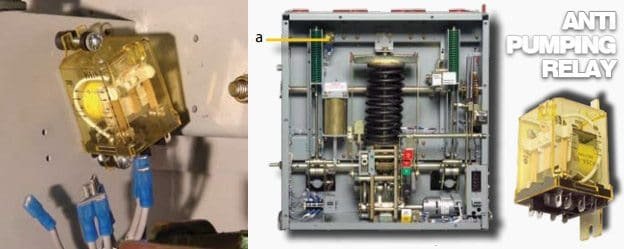What is the Application of Reactive Power ? Reactive power is vital for voltage control and system reliability in electrical power systems. It supports the voltage essential for proper operation of power equipment, reduces transmission losses, and prevents voltage collapse.
It regulates voltage, ensuring efficient energy supply and preventing damage to generators and motors. In electrical systems, alternating current supply or consumption involves two types of power: real power, which accomplishes useful work, and reactive power, supporting voltage control throughout the system.
I know reactive power plays a crucial role in the efficient and stable operation of the grid. While its often overshadowed by its flashier cousin, active power, it’s the unsung hero of AC systems. Let’s delve into its applications with actionable steps and an example:
1. Maintaining Voltage Stability:
Imagine voltage like water pressure; reactive power acts like a pump, ensuring adequate pressure for active power to flow smoothly. Devices like motors and transformers consume reactive power, causing voltage dips. To counter this, we:
- Step 1: Identify reactive power loads using power factor analysis tools.
- Step 2: Install reactive power generators like capacitors or synchronous condensers at strategic points in the grid.
- Step 3: Monitor and adjust their output to maintain optimal voltage levels.

Example: A factory with heavy-duty motors suffers voltage drops, affecting production. By installing capacitor banks near the motors, the reactive power demand is counterbalanced, stabilizing voltage and ensuring smooth operation.
Reactive power, measured in Volt-Amps-Reactive (VAR), ensures the stability and efficiency of electrical power systems. Devices such as generators, capacitors, and inductors manage the flow of reactive power to maintain voltage levels. Understanding its application and importance is essential for optimizing the performance and reliability of electrical power systems.
2. Reducing Transmission Losses:
Reactive power creates a phase shift between voltage and current in transmission lines, increasing losses. To minimize this:
- Step 1: Employ power factor correction techniques like capacitor banks or FACTS (Flexible AC Transmission Systems) devices.
- Step 2: Strategically place them along transmission lines to reduce the phase shift and optimize power delivery.
- Step 3: Continuously monitor power flows and adjust reactive power injection as needed.
Example
Long-distance transmission of large amounts of active power through lines with low reactive power support leads to significant losses. By strategically placing FACTS devices, the phase shift is mitigated, reducing losses and increasing power delivery efficiency.
3. Enhancing System Stability:

Reactive power plays a crucial role in grid stability during disturbances like sudden load changes or faults. By:
- Step 1: Strategically locating reactive power sources like synchronous condensers at critical points.
- Step 2: Employing fast-acting control systems to dynamically adjust their output.
- Step 3: Providing immediate reactive power support, the grid can rapidly regain equilibrium, preventing cascading failures.
Example:
A sudden power outage triggers reactive power imbalance, threatening grid stability. Synchronous condensers at key substations automatically inject reactive power, stabilizing voltage and preventing a blackout.
Remember: Managing reactive power is an ongoing process requiring continuous monitoring, analysis, and adjustments. Understanding its applications and using the right tools empowers us to ensure a reliable, efficient, and stable power system.
Importance Of Reactive Power In Power Systems
Reactive power plays a crucial role in power systems, primarily in voltage control. It is essential for supporting the voltage, which is vital for system reliability. Reactive power is distinct from real power as it doesn’t accomplish useful work but regulates voltage.
Voltage control is crucial in electrical power systems to prevent equipment damage, reduce transmission losses, and maintain system ability to withstand voltage collapse.
Additionally, reactive power, measured in Volt-Amps-Reactive (VAR), supports the efficient operation of generators and motors, crucial for maintaining system stability.
The combination of reactive power and true power forms apparent power, measured in Volt-Amps (VA), representing the product of a circuit’s voltage and current. Overall, reactive power is integral for ensuring optimal voltage control and system stability in power grids.
Application Of Reactive Power In Electrical Equipment
Reactive power plays a crucial role in electrical equipment, influencing generators and motors. It is vital for voltage control in an electrical power system, preventing overheating of generators and motors, reducing transmission losses, and maintaining system reliability to prevent voltage collapse.
While real power accomplishes useful work, reactive power regulates voltage, ensuring proper operation of electrical power equipment.
Optimization Of Reactive Power In Power Systems
Reactive power plays a crucial role in electrical power systems, affecting system efficiency by supporting voltage control. In an alternating system, real power performs useful work while reactive power sustains voltage, impacting the entire system. One vital application of reactive power is voltage control, essential for preventing equipment damage, reducing losses, and maintaining system reliability. Unlike active power, which powers devices, reactive power regulates voltage.
The combination of reactive power and true power is known as apparent power, measured in Volt-Amps (VA). Reactive power, symbolized by the letter Q and measured in Volt-Amps-Reactive (VAR), forms an integral part of system optimization and stability.
For further exploration, check out these resources:
- CIGRE (International Council on Large Electric Systems): https://www.cigre.org/
- Electric Power Systems by O.I. Elgerd: https://catedras.facet.unt.edu.ar/sep/wp-content/uploads/sites/20/2020/03/Electric-Energy-Systems-Theory-An-Introduction-Elgerd.pdf







